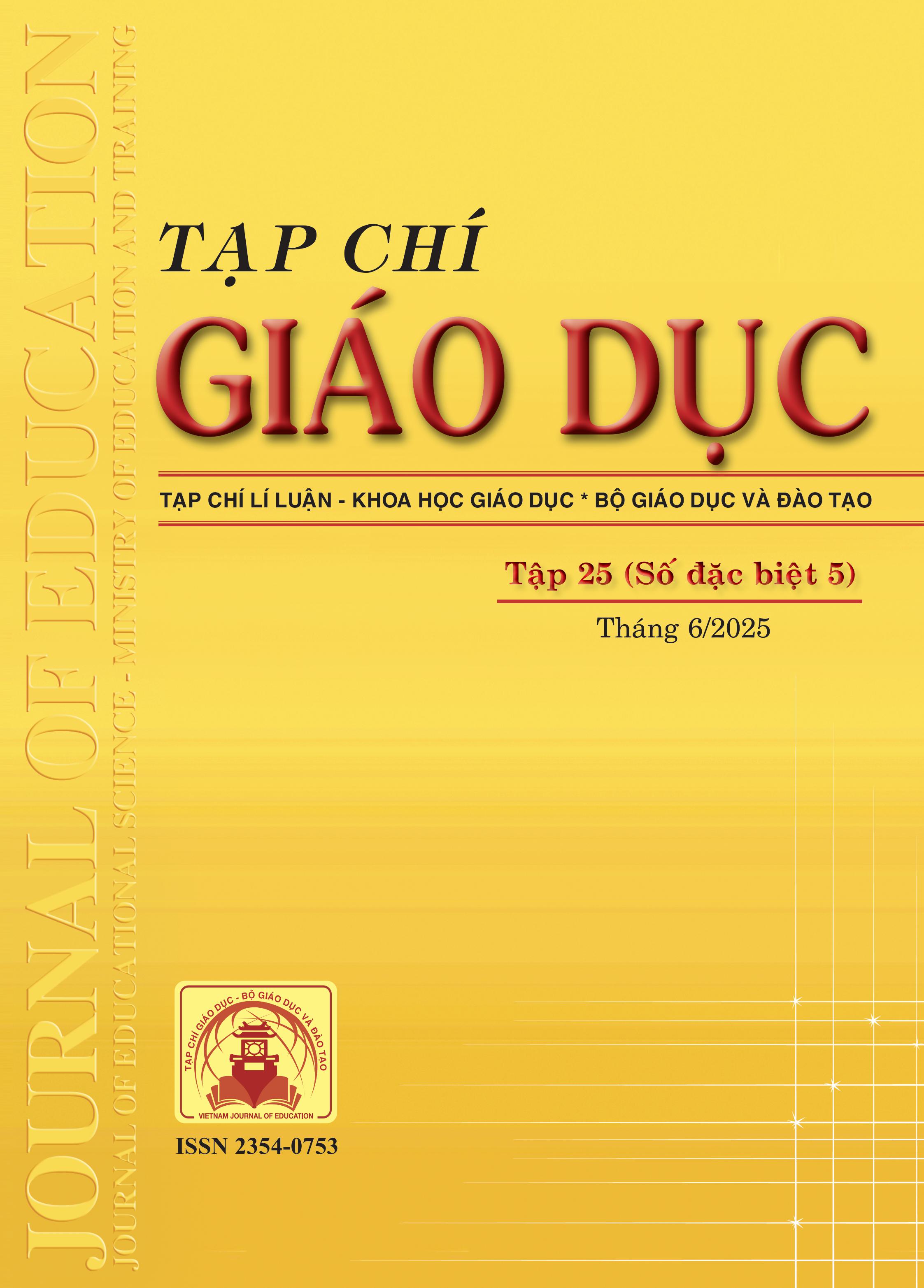Sử dụng mô hình lớp học đảo ngược trong dạy học học phần “Phương pháp toán lí” cho sinh viên đại học ngành Sư phạm Vật lí
Tóm tắt
In the context of innovation in higher education towards developing learners' competence, the application of active teaching methods is increasingly receiving attention. The flipped classroom model allows learners to self-study at home through video lectures and learning materials, then come to class to discuss, solve problems and practice. This approach helps to change the role of the teacher from a knowledge transmitter to a guide, supporting the learners' learning process. The study proposes a teaching organization process according to the flipped classroom model in teaching the subject “Mathematical and physical methods” for university students majoring in Physics Education and illustrates this process in teaching the content “Establish the free oscillation equation of a finite string with two tightly tied ends”. Using the Flipped Classroom model not only meets the trend of digital transformation in education but also promotes the proactive and active role of students in the learning process.
Tài liệu tham khảo
Amanah, S. S., Wibowo, F. C., & Astra, I. M. (2021). Trends of Flipped Classroom Studies for Physics Learning: A Systematic Review. Journal of Physics: Conference Series, 1-8. https://doi.org/10.1088/1742-6596/2019/1/012044
Đỗ Đình Thanh (2002). Phương pháp toán lí. NXB Giáo dục.
Elley, R. A. Z. (2015). Using the Blended learning method in a literature classroom: A case study on teaching sonnets. Proceeding of the 2nd International Conference on Management and Muamalah, 136-146.
Fautch, J. M. (2015). The flipped classroom for teaching organic chemistry in small classes: Is it effective?. Chemistry Education Research and Practice, 16(01), 179-186.
Horn, M., & Staker, H. (2015). Blended: Using Disruptive Innovation to Improve Schools. Jossey-Bass; 1 edition, 31-38.
Lage, M. J., Platt, G. J., & Treglia, M. (2000). Inverting the classroom: A gateway to creating an inclusive learning environment. The Journal of Economic Education, 31(01), 30-43.
Love, B., Hodge, A., Corritore, C., & Ernst, D. C. (2015). Inquiry-based learning and the flipped classroom model. Primus, 25(8), 745-762
Nguyễn Chính Cương (2009). Bài tập phương pháp toán lí. NXB Đại học Sư phạm.
Nguyễn Lâm Đức, Lê Minh Thanh Châu (2020). Tổ chức dạy học trực tuyến môn Vật lí theo mô hình lớp học đảo ngược ở trường trung học phổ thông. Tạp chí Giáo dục, số đặc biệt kì 1 tháng 5, 138-142.
Nguyễn Thanh Nga, Đoàn Thị Thu Trang (2023). Tổ chức dạy học một số kiến thức chương “Âm học” (Vật lí 7) theo mô hình lớp học đảo ngược nhằm phát triển năng lực khoa học tự nhiên của học sinh. Tạp chí Khoa học, Trường Đại học Sư phạm Thành phố Hồ Chí Minh, 20(1), 110-122.
Nguyễn Thế Dũng (2015). B-learning và quá trình đánh giá trong dạy học hướng đến phát triển năng lực của người học. Tạp chí Khoa học, Trường Đại học Sư phạm Hà Nội, 8D, 130-137.
Nguyễn Thị Diễm Hằng (2022). Vận dụng mô hình lớp học đảo ngược tổ chức dạy học nội dung “Vẽ cấu trúc phân tử” (Chuyên đề học tập Hóa học 10) nhằm phát triển năng lực tự học của học sinh. Tạp chí Giáo dục, 22(22), 7-13.
Nguyễn Văn Lợi (2014). Lớp học nghịch đảo - Mô hình dạy học kết hợp trực tuyến và trực tiếp. Tạp chí Khoa học, Trường Đại học Cần Thơ, 34, 56-61.
Reidsema, C., Kavanagh, L., & Hadgraft, R. (2017). The Flipped Classroom Practice and Practices in Higher Education. Springer Singapore, 3-14.
Tan, D., Koh, N. K., & Walker, Z. (2020). Flipped Classrooms with Diverse Learners International Perspectives. Springer Nature Singapore, 3-34. https://doi.org/10.1007/978-981-15-4171-1
Đã Xuất bản
Cách trích dẫn
Số
Chuyên mục
Giấy phép

Tác phẩm này được cấp phép theo Ghi nhận tác giả của Creative Commons Giấy phép quốc tế 4.0 .












